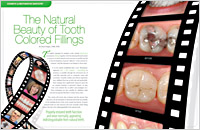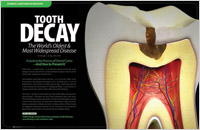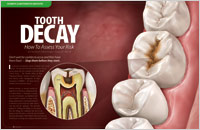What type of fillings does your office do?
We only do white fillings at our office. These filling materials are called composite or glass ionomer. If a baby tooth has very large decay or decay that extends to the nerve, we may recommend placement of a stainless steel (silver) crown.
Both scientific studies and clinical experience have shown that tooth-colored restorations (fillings) are safe, reliable and long-lasting. Plus, they look great.

The Process of Filling a Tooth
There are many reasons why a tooth may need to be filled or restored: decay and chipping are two common ones. No matter which material is chosen, the procedure is almost the same. If necessary, a local anesthetic is administered by the area we will be working on. We place a topical anesthetic prior to "numbnig" the tooth and this (with a few other tricks) helps most of our patients do really well for this process. After this, the tooth is “prepared” by removing decay and making it ready for the restoration. Next, the filling material is placed directly into the tooth. Once it has securely bonded to the tooth structure, the process is essentially complete.
Now, here's the difference: In order to achieve a good structural bond with a traditional amalgam (silver) filling, it is often necessary to shape the tooth by making a series of “undercuts” that help hold the material in place. This means that some healthy tooth material must be removed, leaving less of the tooth's structure intact. In time, the structurally-weakened tooth can be prone to cracking. But composite resin fillings don't require undercutting to make a strong union — instead, they form an intimate physical and mechanical bond directly to the prepared tooth. This more conservative treatment may ultimately lead to a better and longer-lasting restoration.
When Can Tooth-Colored Fillings Be Used?
Composite resins are generally appropriate for small to moderate-sized restorations — which encompass the most common types of fillings. They are durable, fracture-resistant, and able to withstand chewing pressure.
Whatever the situation, the best way to determine whether white fillings are right for your child is to come in and consult with us. We can explain the appropriate options and help you select the best way to proceed with treatment.
Related Articles on White Fillings

The Natural Beauty of Tooth-Colored Fillings The public's demand for aesthetic tooth-colored (metal free) restorations (fillings) together with the dental profession's desire to preserve as much natural tooth structure as possible, has led to the development of special “adhesive” tooth-colored restorations... Read Article

What is Tooth Decay? – And How to Prevent It! Tooth Decay is an infection, and many people don't realize that it is preventable. This article is the first in a series about tooth decay, perhaps the number one reason children and adults lose teeth during their lifetime. Explore the causes of tooth decay, its prevention and the relationship to bacteria, sugars and acids... Read Article

Tooth Decay – How To Assess Your Risk Don't wait for cavities to occur and then have them fixed — stop them before they start. Modern dentistry is moving towards an approach to managing tooth decay that is evidence-based — on years of accumulated, systematic, and valid scientific research. This article discusses what you need to know to assess your risk and change the conditions that lead to decay... Read Article
